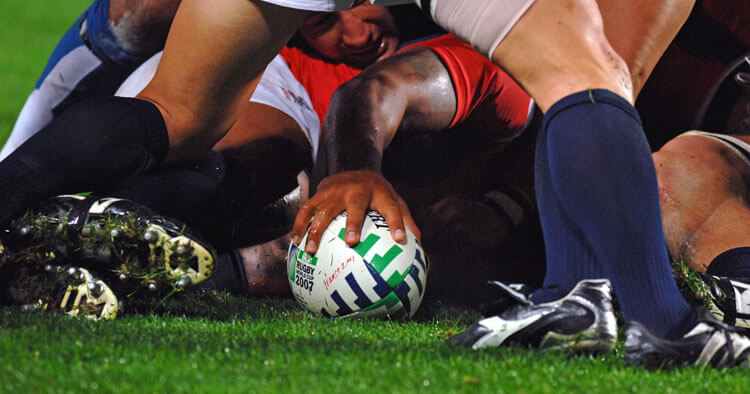Injury Rehabilitation and Training, Sports Injuries and Management, Surgical Procedures and Protocols
Acromioclavicular Joint Sprain And Its Management
Acromioclavicular Joint Sprain: The Sporting Shoulder Injury
Injuries to the Acromioclavicular joint (often referred to as the AC jt) make up almost half of all sporting shoulder injuries. An acromioclavicular joint sprain is an injury typically the result of direct impact to the shoulder from a fall. The type fall I commonly see causing AC joint sprains in my Sydney physio practice occur during falls off a push bike or resulting from tackles in contact sports like rugby league, rugby union or AFL and to a lesser degree football (soccer) where the individual has been “dumped” on their shoulder during a tackle or landed awkwardly during a less violent tackle.
What Is Damaged In An Acromioclavicular Joint Sprain?
An injury to the AC joint involves failure of the acromioclavicular ligaments and the joint capsule which are the supportive structures directly holding the collar bone to the part of your shoulder blade known as the acromium. A more significant AC joint sprain will include damage to the above listed structures followed by failure of the coraco-clavicular ligaments (which are the ligaments going from the front of shoulder blade to the collar bone) as well as damage to some of the adjacent soft tissues (fascia of the shoulder muscles).
Grading AC joint Injury
Outcomes following AC joint injury correlate nicely with the grade (or severity) of injury. This makes it important to understand the grade of injury as the grade will help dictate treatment and prognosis. Often a subjective history of injury coupled with examination of the shoulder is sufficient for diagnosis, however having an X-ray of the shoulder is useful for assisting the diagnosis and helping establish the grade of injury.
Classification Of Acromicoclavicular Joint Injury And The Treatment Options
The classification of AC joint injury and their management for the varied grades of acromioclavicular joint injuries:
- Type I – AC ligament sprain with the AC joint not dislocated.
Type II- AC ligament tear, where the coracoclavicular ligaments are intact.
For these acromioclavicular joint sprain grades (grades 1 and 2) they are generally treated non-operatively. Patients may be required wear a sling for 1-2 weeks with or without supportive taping being guided by pain. With regard to physiotherapy treatment, rehabilitation can commence early on once the initial significant pain of injury subsides, most patients should return to playing sport after just a couple of months. - The treatment for Type III injuries are less clear cut. In a type III sprain of the the AC joint, the AC ligaments and coracoclavicular ligaments are torn, with 100% AC joint dislocation.
These grade III injuries can be managed surgically, or non surgically. Most patients will recover adequate strength and endurance when treated non-surgically. Management of this type of acromioclavicular joint sprain is more controversial than that of some of the other grade AC joint injuries and some patients will be suggested surgical intervention by their surgeon and others advised against it. Most likely surgery will be considered more seriously as an option with grade III sprains when an individuals work, or sports require repetitive overhead activities. If surgery is to be performed then ideally it is best done within six weeks of the injury occurring, before healing is complete. - For more significant AC joint injuries, type IV to VI are generally surgically managed with the intention of re-positioning the acromioclavicular joint back in its anatomic position. Type IV – VI AC joint injuries are complete dislocation variations where the collar bone displaces through the muscle above, below and behind. These sprains are obviously more severe injuries requiring surgery and resulting in a more drawn out post-operative physiotherapy rehabilitation.
Disclaimer: This information is provided as an educational service and is not intended to serve as medical advice. Anyone seeking specific medical advice or assistance on Acromioclavicular Joint Sprain And Its Management should consult his or her general practitioner, physiotherapist, or otherwise appropriately skilled practitioner.


